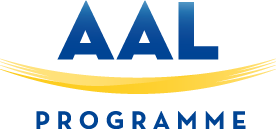USERS
Why user’s involvement is important to us?
The AAL Programme focuses also on users. It means that our funded projects must foresee a series of tests to carry out by the final users of the products and the services. This is a requirement that aims at helping to generate solutions with a potential market in a timeframe of 2-3 years after the end of the projects. Information and communication technology (ICT) is a relatively new technology that is only partially used by older adults: this is due to their scarce ICT literacy and sometimes because of their reluctance to use “futurists” devices. It is in this perspective that AAL aims to remove the barriers that currently prevent such ICT-based solutions from being massively deployed, so that the older adults, the users and consumers can truly make the most of the outputs of our programme.


